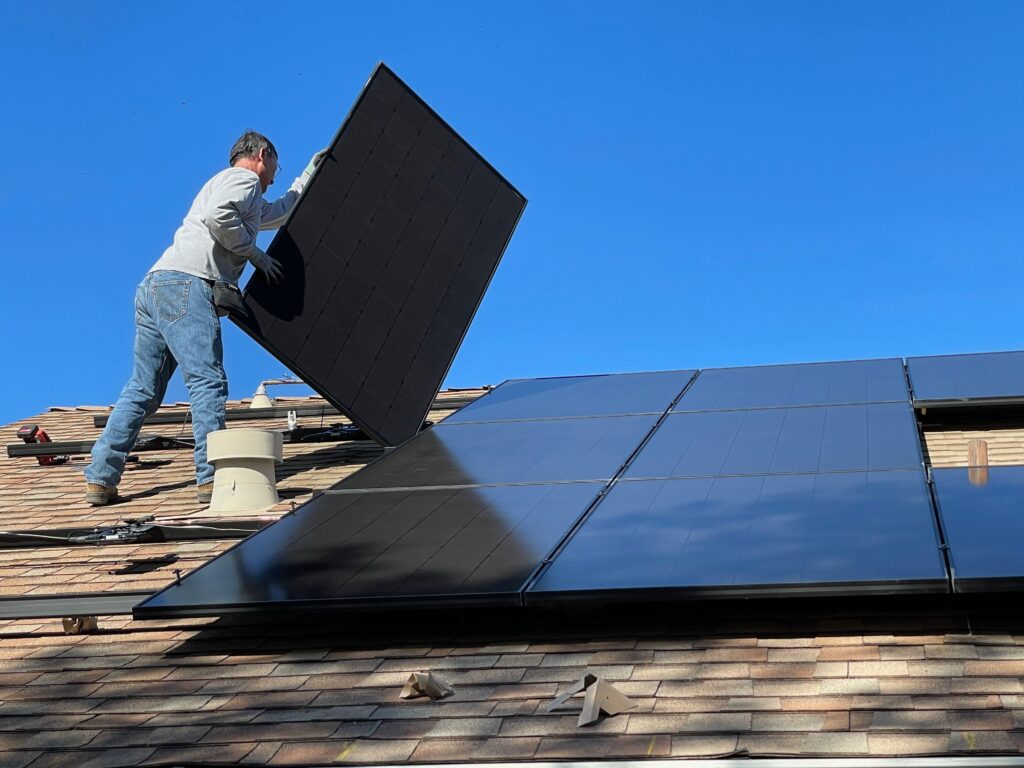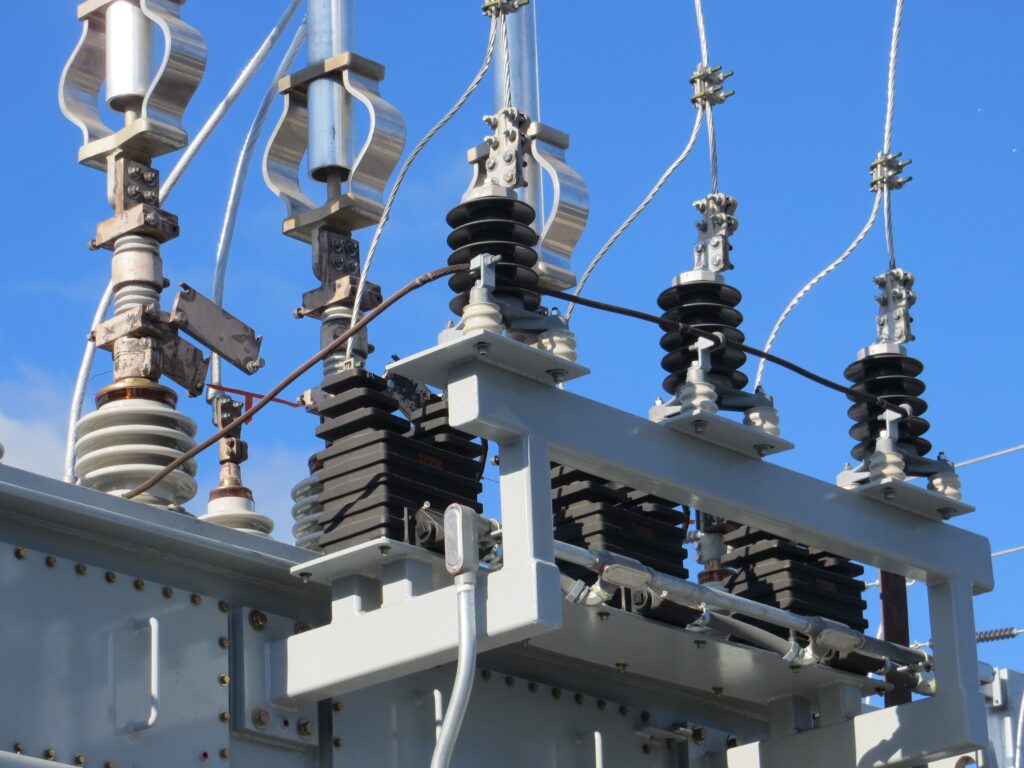If you’re wondering about the right size generator for your portable air conditioner, worry no more! In this article, we’ll provide you with all the answers you need. We understand that finding the perfect generator to support your air conditioning needs can be a daunting task, but fear not, because we’ve got you covered. Whether you’re planning to use your portable air conditioner for camping, emergency situations, or simply for extra comfort in your home, we’ll guide you through the process of determining the ideal generator size. So let’s get started and ensure you can stay cool and comfortable wherever you go!
Understanding Portable Air Conditioners
Definition of Portable Air Conditioner
A portable air conditioner is a self-contained cooling unit that can be easily moved from one room to another, providing temporary relief from hot and humid weather. Unlike traditional air conditioners that are permanently installed, portable air conditioners offer flexibility and convenience, making them an ideal cooling solution for renters or homeowners who don’t want to make a permanent installation.
Types of Portable Air Conditioners
There are two main types of portable air conditioners: single-hose and dual-hose units.
-
Single-hose units: These portable air conditioners have one hose that serves both as an exhaust for hot air and an intake for fresh air. They are easier to set up and more affordable than dual-hose units. However, they may not be as efficient in cooling larger spaces because they draw in warm air from inside the room, reducing their overall cooling capacity.
-
Dual-hose units: These portable air conditioners have two separate hoses, one for intake and the other for exhaust. The intake hose brings in fresh air from outside, while the exhaust hose expels hot air. This design allows for faster and more efficient cooling, especially in larger spaces. Dual-hose units are generally recommended for areas where cooling performance is crucial.
How Portable Air Conditioners Work
Portable air conditioners work by extracting heat and moisture from the air, cooling it down, and then blowing the cooled air back into the room. They function through a refrigeration cycle, similar to traditional air conditioners. Here is a simplified breakdown of how they work:
-
Air intake: The portable air conditioner draws in warm air from the room through the intake hose.
-
Cooling process: Inside the unit, the warm air passes over a set of evaporator coils that contain a refrigerant. The refrigerant absorbs heat from the air, cooling it down.
-
Moisture removal: As the air cools, the moisture in the air condenses on the evaporator coils. This helps dehumidify the room, making it more comfortable.
-
Hot air exhaust: The cooled air is then blown back into the room, while the extracted heat and moisture are expelled through the exhaust hose.
-
Repeat cycle: This process continues until the desired temperature is reached, maintaining a comfortable indoor climate.
Understanding the workings of a portable air conditioner is crucial when considering power requirements and selecting a compatible generator to ensure efficient and uninterrupted cooling.
Understanding Generators
Definition of a Generator
A generator is a device that converts mechanical energy into electrical energy, providing a temporary or backup power source in the absence of utility power. It consists of an engine, usually fueled by gasoline, diesel, propane, or natural gas, and an alternator that generates electricity.
Generators are commonly used in various settings, including residential homes, construction sites, and outdoor events, to power different electrical appliances and equipment.
Types of Generators
There are several types of generators, each with its unique features and suitability for different applications. Here are the most common types:
-
Conventional (portable) generators: These generators are versatile and can be easily transported from one location to another. They typically run on gasoline or diesel fuel and provide power through multiple outlets. Conventional generators are available in various wattage capacities, making them suitable for a range of power needs.
-
Inverter generators: Inverter generators are a more advanced type of generator that provides cleaner and more stable electrical power. They are known for their quiet operation, fuel efficiency, and ability to regulate power output according to the connected load. Inverter generators are particularly popular for powering sensitive electronic devices and appliances.
-
Standby generators: Standby generators are permanently installed outside a building and connected to the electrical system. They are designed to automatically start and provide backup power in the event of a utility power outage. Standby generators are typically fueled by natural gas or propane and offer a high capacity for powering an entire home or business.
How Generators Work
Generators work on the principle of electromagnetic induction. Here’s a simplified explanation of how generators produce electricity:
-
Fuel combustion: The engine of the generator, fueled by gasoline, diesel, or other fuel sources, combusts the fuel, converting its chemical energy into mechanical energy.
-
Mechanical energy to rotational motion: The mechanical energy produced by the engine is converted into rotational motion. This rotation typically occurs at a constant speed, usually measured in revolutions per minute (RPM).
-
Rotating magnetic field: As the engine rotates, it turns a rotor inside the generator. The rotor consists of powerful magnets, which create a rotating magnetic field.
-
Electric current generation: Surrounding the rotor is a stationary set of wire coils, known as the stator. The rotating magnetic field induces an electric current in the wire coils, generating electricity.
-
Power output: The generated electricity is then available for use through outlets or can be connected to an electrical system to provide power to different devices and appliances.
Generators play a vital role in powering various electrical devices, including portable air conditioners, ensuring comfort and convenience even during power outages or in off-grid locations.
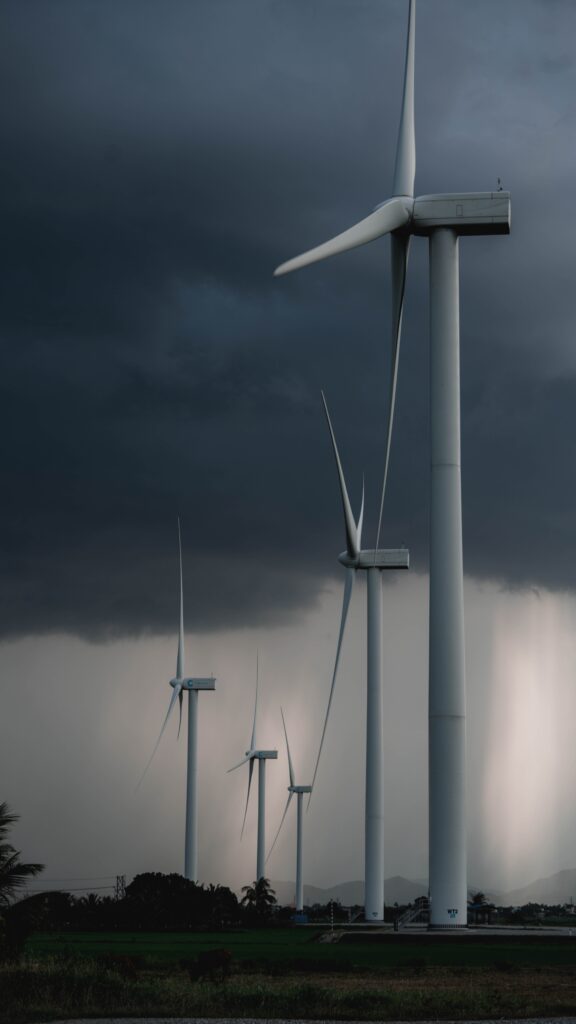
Power Requirements of a Portable Air Conditioner
Understanding Wattage and Voltage of Air Conditioners
When it comes to powering a portable air conditioner, it’s essential to understand its wattage and voltage requirements.
-
Wattage: The wattage rating of an air conditioner indicates the amount of power it consumes to operate effectively. It represents the rate at which electrical energy is used and is measured in watts. The wattage of portable air conditioners can vary significantly, depending on their size, cooling capacity, and energy efficiency.
-
Voltage: Voltage refers to the electrical potential difference at which an air conditioner operates. In North America, the standard household voltage is 120 volts, while in some other countries, it may be 220-240 volts. It is crucial to ensure that the voltage requirements of your portable air conditioner match the voltage available at your location.
Reading the Specifications of Your Air Conditioner
To determine the power requirements of your portable air conditioner, consult its specifications, which can usually be found in the user manual or on the manufacturer’s website. The specifications should provide information such as the rated wattage and the required voltage. If you can’t find the wattage rating, you may be able to find the amperage (current) rating, which can be used to calculate the wattage using the formula: Wattage = Voltage x Amperage.
Calculating the Energy Consumption of Your Air Conditioner
Knowing the energy consumption of your portable air conditioner is crucial for selecting an appropriate generator size and estimating the runtime. To calculate the energy consumption, multiply the wattage rating of the air conditioner by the number of hours it will be running per day. For example, if your air conditioner consumes 1200 watts and will be running for 8 hours, it will consume 1200 watts x 8 hours = 9600 watt-hours (or 9.6 kilowatt-hours) of electricity per day.
Understanding the power requirements of your portable air conditioner is vital to ensure that the selected generator can provide enough power to run the unit effectively and efficiently.
Understanding Generator Capacity
Definition of Generator Capacity
Generator capacity refers to the maximum electrical power output that a generator can provide, typically measured in watts or kilowatts. It represents the ability of the generator to handle different loads and power demands. It is crucial to match the generator’s capacity with the electrical load it will be powering to ensure optimal performance and prevent damage to the generator or connected devices.
How to Determine the Capacity of a Generator
To determine the capacity of a generator needed to power a portable air conditioner, you must consider both the starting wattage and the running wattage of the air conditioner.
-
Starting wattage: The starting wattage, also known as the surge wattage, is the power required by the air conditioner when it is first switched on. This initial surge is needed to start the compressor and other electrical components. Starting wattage is generally higher than the running wattage and lasts only for a few seconds.
-
Running wattage: The running wattage is the power consumed by the air conditioner to operate continuously once it has started up. It represents the steady-state power requirements of the unit.
Types of Loads Handled by Generators
Generators can handle two types of loads: resistive loads and inductive loads.
-
Resistive loads: Resistive loads consist of devices that have a constant power consumption, such as light bulbs, toaster ovens, or coffee makers. The power requirements for resistive loads are straightforward and can be easily matched with the generator’s rated capacity.
-
Inductive loads: Inductive loads, such as motors and compressors in air conditioners, have a higher starting wattage due to the initial surge required to start the device. While the running wattage of an inductive load may be relatively lower, the starting wattage must be considered when selecting a generator.
Matching the nominal power requirements and accounting for the starting wattage is essential to ensure that the generator is capable of handling the initial surge and providing sufficient power to run the air conditioner continuously.
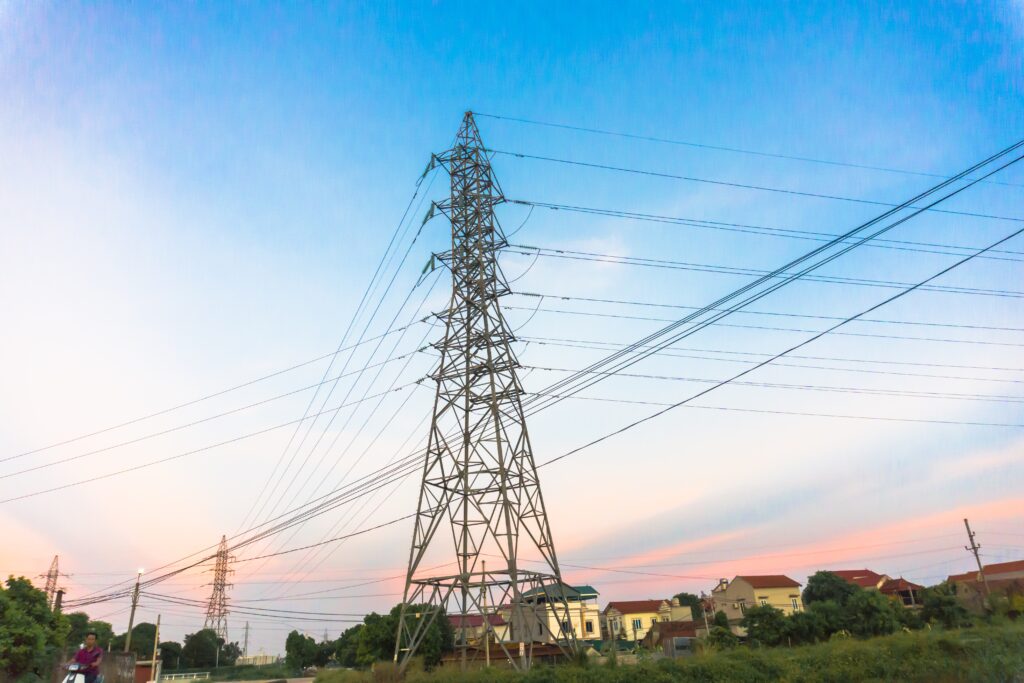
Matching Generator Size to Your Air Conditioner
Understanding Starting and Running Watts
When selecting a generator to power your portable air conditioner, it is essential to understand the difference between starting watts and running watts.
-
Starting watts: Starting watts, also known as peak watts or surge watts, refer to the extra power required by appliances during startup. The starting watts are needed to overcome the initial surge when the compressor or motor starts. It is generally higher than the running watts and lasts only for a few seconds.
-
Running watts: Running watts, also known as rated watts, represent the power required by the appliance to operate continuously once it has started. It reflects the steady-state power consumption of the device.
Calculating Required Generator Size
To determine the appropriate generator size for your portable air conditioner, you need to consider both the starting watts and the running watts of the air conditioner.
-
Starting wattage: Check the specifications of your air conditioner to find the starting wattage. This information may be provided by the manufacturer or can be calculated based on the amperage rating using the formula: Starting watts = Voltage x Amperage.
-
Running wattage: The running wattage is usually provided in the specifications of the air conditioner.
-
Add starting and running watts: Add the starting wattage and running wattage together to determine the total wattage requirement of your air conditioner.
For example, if your portable air conditioner has a starting wattage of 3000 watts and a running wattage of 1200 watts, you would need a generator with a capacity of at least 4200 watts to accommodate the startup surge and continuous operation of the air conditioner.
Accounting for Other Appliances
When selecting a generator size, it’s essential to consider any other appliances or devices that may be connected to the generator simultaneously. Remember to add up the wattages of all the appliances and devices that will be running simultaneously to determine the total power requirements. Make sure the generator’s capacity is sufficient to handle the combined load to avoid overloading the generator.
Taking into account the starting and running watts of your air conditioner, as well as any additional appliances or devices, will help ensure that the generator can handle the total power demand and provide reliable power without being overloaded.
Effects of Underpowered and Overpowered Generators
Damage to Appliances from Underpowered Generators
Using an underpowered generator to run your portable air conditioner can have detrimental effects on both the generator and the air conditioner. When the generator’s capacity is insufficient to meet the startup surge and running wattage of the air conditioner, the following issues may arise:
-
Inefficient cooling: The lack of sufficient power supply may result in inefficient cooling performance from the air conditioner. It may struggle to reach and maintain the desired temperature, leading to discomfort and reduced comfort levels.
-
Overheating and damage: Underpowered generators may not be able to provide the necessary power to the air conditioner, causing it to overheat and potentially damage components like the compressor or motor. Overheating can lead to premature wear and tear, resulting in reduced lifespan and costly repairs.
-
Reduced generator lifespan: Continuously running an underpowered generator can put excessive strain on the engine and alternator, shortening their lifespan. The generator may struggle to provide consistent power output and may eventually fail.
To avoid these potential issues, it is crucial to select a generator with sufficient capacity to meet the power requirements of your air conditioner.
Waste and Inefficiency from Overpowered Generators
While using an overpowered generator may seem like a solution to ensure sufficient power supply, it can lead to its own set of problems:
-
Fuel inefficiency: Overpowered generators may consume more fuel than necessary, resulting in wasteful energy consumption. This can lead to extra expenses on fuel and unnecessary environmental impact.
-
Increased noise: Overpowered generators often run at a higher capacity than required, generating more noise due to increased engine speed. This can be especially bothersome in residential areas or when trying to maintain a peaceful environment.
-
Higher maintenance needs: Overworked generators may require more frequent maintenance and repairs due to increased wear and tear on the engine and other components. This can lead to higher maintenance costs and greater inconvenience.
To ensure efficient and optimal performance, it is recommended to select a generator that matches the power requirements of your air conditioner without being significantly overpowered.
Safety Risks Associated with Incorrect Generator Size
Using a generator of incorrect size to power your air conditioner can pose safety risks to both the appliances and individuals. Here are some potential safety risks:
-
Overloading circuits: If the generator is unable to handle the combined load of the air conditioner and other connected devices, it may overload the circuitry. This can cause electrical failures, tripped circuit breakers, or even electrical fires.
-
Electrical hazards: Incorrect generator sizing can lead to electrical hazards, including short circuits, voltage irregularities, or power surges. These hazards can damage sensitive electronic appliances or pose a risk of electrical shock to individuals.
-
Carbon monoxide poisoning: Improper generator placement or ventilation can lead to the accumulation of carbon monoxide gas, which is produced as a byproduct of the generator’s operation. Carbon monoxide is a colorless and odorless gas that can be fatal if inhaled in high concentrations. It is crucial to operate generators in well-ventilated areas and follow manufacturer instructions for safe usage.
To ensure the safety of both the appliances and the individuals operating the generator, it is essential to select a generator size that matches the power requirements of the air conditioner and follow appropriate safety guidelines.
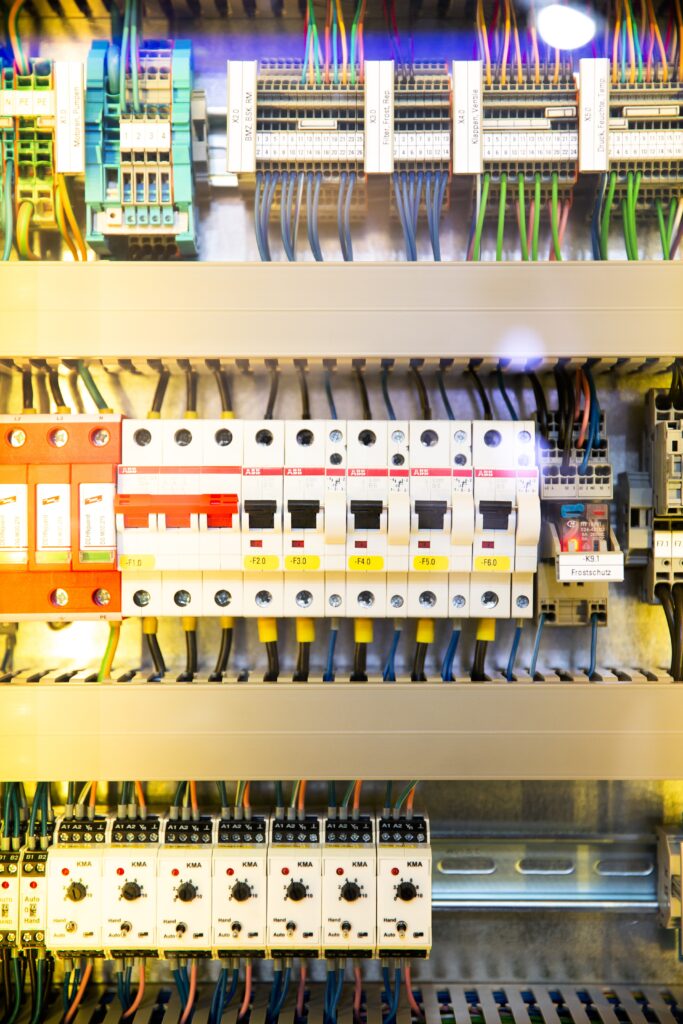
Recommendations for Generator Sizes
Typical Generator Sizes for Portable Air Conditioners
The appropriate generator size for your portable air conditioner will depend on factors such as the starting wattage, running wattage, and additional appliances. Here are some general recommendations based on common air conditioner wattage ratings:
-
3000 to 4000 watts: This range of generator size is suitable for portable air conditioners with starting wattages ranging from 2000 to 3000 watts and running wattages around 1000 to 1500 watts.
-
5000 to 6000 watts: Generators within this range can handle portable air conditioners with starting wattages between 3000 and 4000 watts and running wattages around 1500 to 2000 watts.
-
7000 to 8000 watts: This range is suitable for larger air conditioners with starting wattages up to 5000 watts and running wattages around 2000 to 3000 watts.
These recommendations are meant as a general guideline, and it is crucial to refer to the specifications of your specific air conditioner and consider any additional appliances or devices to make an informed decision.
Considerations When Selecting a Generator
When selecting a generator to power your portable air conditioner, consider the following factors:
-
Power requirements: Ensure that the generator’s capacity matches or exceeds the total power requirements of your air conditioner, including the starting and running wattages. Refer to the air conditioner’s specifications and carefully calculate the total power needs.
-
Fuel type: Consider the availability and convenience of the fuel type that the generator operates on, such as gasoline, diesel, propane, or natural gas. Different fuel types have varying costs, storage requirements, and environmental considerations.
-
Runtime and fuel efficiency: Assess the generator’s runtime based on its fuel capacity and fuel efficiency. Generators with longer runtimes allow for more continuous operation without refueling, while fuel-efficient models can help reduce overall fuel consumption and cost.
-
Noise level: If noise is a concern, especially in residential areas or when aiming for a quiet environment, consider generators that offer quieter operation. Inverter generators are generally known for their quieter performance.
-
Portability and storage: If you plan to move the generator frequently or have limited storage space, consider the size, weight, and portability features of the generator. Compact and lightweight models may be more convenient for transportation and storage.
By taking these considerations into account, you can select a generator that best meets your power requirements, while also considering factors such as fuel availability, noise levels, and portability.
Top Generator Brands for Running a Portable Air Conditioner
When it comes to selecting a generator for powering your portable air conditioner, there are several reputable brands known for their quality and reliability. Some of the top generator brands include:
-
Honda: Honda generators are highly regarded for their durability, fuel efficiency, and quiet operation. They offer a range of generator models suitable for various power needs.
-
Yamaha: Yamaha generators are known for their reliable performance, fuel efficiency, and low noise levels. They offer both portable and inverter generator options.
-
Generac: Generac is a well-established brand specializing in standby generators and portable generators. They offer a wide range of generator sizes and models suitable for different applications.
-
Champion: Champion is known for its affordable and feature-rich generators. They offer a diverse lineup of portable generators with various wattage capacities.
-
Westinghouse: Westinghouse generators are recognized for their value, reliability, and ease of use. They provide a range of generators suitable for powering portable air conditioners.
While these brands have a strong reputation in the generator market, it’s important to research and compare specific models to find the one that best suits your needs and budget.
Consideration of Fuel Types for Generators
Understanding Various Fuel Options
Generators can be powered by different fuel types, each with its own advantages and considerations. The most common fuel options for generators include:
-
Gasoline: Gasoline is widely available and accessible, making it a popular choice for portable generators. Gasoline generators are generally more affordable, easy to refuel, and suitable for smaller power needs. However, gasoline has a limited shelf life and can be less fuel-efficient compared to other options.
-
Diesel: Diesel generators are known for their fuel efficiency, durability, and longer runtime. They are often preferred for larger power needs and commercial applications. Diesel fuel is less flammable than gasoline and has a longer shelf life. However, diesel generators tend to be more expensive upfront and require additional maintenance.
-
Propane: Propane generators offer cleaner emissions and are considered more environmentally friendly compared to gasoline or diesel. Propane fuel is readily available in tanks, making it convenient for homeowners or areas without piped natural gas. Propane generators are generally quieter and have a longer shelf life. However, they may be less fuel-efficient and require proper storage and handling of propane tanks.
-
Natural gas: Natural gas generators are commonly used for standby or whole-house applications. They are connected to the natural gas supply, providing a continuous fuel source without the need for refueling. Natural gas generators are cleaner-burning, have lower emissions, and are considered more fuel-efficient. However, they require a natural gas connection, limiting their portability and availability in certain areas.
The choice of fuel type depends on factors such as fuel availability, convenience, environmental considerations, runtime requirements, and budget. Assessing these factors can help determine the most suitable fuel option for your specific needs.
Fuel Efficiency and Cost Comparison
Fuel efficiency is an important consideration when selecting a generator, as it impacts both operating costs and environmental impact. Here is a general fuel efficiency and cost comparison between gasoline, diesel, and propane:
-
Gasoline: Gasoline generators tend to have lower fuel efficiency compared to diesel or propane generators. Gasoline prices may vary depending on location, and fluctuations in prices can impact operating costs.
-
Diesel: Diesel generators are known for their fuel efficiency and longer runtime. Diesel fuel prices can be relatively stable, but diesel is generally more expensive per gallon compared to gasoline.
-
Propane: Propane generators may have lower fuel efficiency compared to diesel or gasoline generators, but propane fuel prices can vary depending on region and availability. Propane tanks may also require additional costs for refilling or exchanging.
When considering fuel efficiency and cost, it’s important to account for local fuel prices, availability, and the expected runtime requirements of your generator. These factors will help determine the optimal fuel type that balances both efficiency and cost-effectiveness.
Effect of Fuel Type on Generator Size
The choice of fuel type can also impact the size and capacity of the generator needed to power your air conditioner. Here are a few considerations related to generator size and fuel type:
-
Power output: Different fuel types may have varying energy densities, affecting the power output of the generator. For example, diesel fuel has a higher energy density than gasoline, allowing diesel generators to produce more power for a given engine size.
-
Efficiency: Some fuel types, such as propane or natural gas, may have lower energy densities compared to gasoline or diesel. As a result, generators running on propane or natural gas may require larger engine sizes to produce the same power output as a smaller gasoline or diesel generator.
-
Generator design: Generators designed for specific fuel types may have different efficiencies and components that affect their power output and capacity. It’s important to consider the specific generator model and its compatibility with the chosen fuel type.
When selecting a generator, consult the manufacturer’s recommendations and specifications to ensure that the chosen fuel type aligns with the generator’s capacity requirements. This will help ensure optimal performance and efficiency of the generator when powering your portable air conditioner.
Maintenance of Generators Running Air Conditioners
Routine Maintenance Procedures
Regular maintenance is essential for ensuring the longevity and proper functioning of both your generator and air conditioner. Here are some routine maintenance procedures for generators:
-
Fuel management: Keep fuel levels adequate and monitor fuel quality if the generator will be used intermittently. Stale fuel can lead to starting and running issues. Follow fuel stabilizer recommendations and replace fuel filters as necessary.
-
Oil checks and changes: Regularly check the oil level in the generator’s engine and follow the manufacturer’s recommendations for oil changing intervals. Clean or replace the oil filter as recommended.
-
Air filter maintenance: Clean or replace the air filter according to the manufacturer’s instructions. A dirty air filter can restrict airflow to the engine, decreasing performance and fuel efficiency.
-
Spark plug inspection and replacement: Inspect the spark plug regularly and clean or replace it if necessary. A worn or fouled spark plug can cause starting issues and poor engine performance.
-
Battery maintenance: If your generator has a battery for electric start or other functions, check the battery regularly and ensure it is properly charged. Clean the battery terminals and cables to prevent corrosion.
-
General cleanliness: Keep the generator and surrounding area clean of debris, dust, and dirt. Regularly inspect and clean cooling vents, fans, and other components to maintain proper airflow and prevent overheating.
Follow the manufacturer’s guidelines for maintenance procedures specific to your generator model. Regular maintenance will help prolong the lifespan of your generator and ensure its reliable performance when powering your air conditioner.
Signs Your Generator Needs Servicing
In addition to routine maintenance, it’s important to be aware of signs that indicate your generator may require servicing or repair. Some common signs that your generator needs attention include:
-
Difficulty starting: If your generator is struggling to start or requires multiple attempts to run, it may indicate issues with fuel delivery, spark plug, ignition components, or other mechanical problems.
-
Reduced power output: If your generator is producing less power than usual or struggling to handle the connected load, it could be a sign of engine issues or a failing alternator.
-
Unusual noises or vibrations: Increased noise levels, excessive vibrations, or unusual sounds coming from the generator may indicate loose components, worn bearings, or other mechanical problems.
-
Increased fuel consumption: A sudden increase in fuel consumption can be an indicator of an underlying issue with the fuel system, engine components, or generator load.
-
Smoke or exhaust issues: Unusual smoke emissions, excessive exhaust, or unusual odors should be investigated promptly, as they may indicate engine problems or fuel system issues.
If you notice any of these signs, it is recommended to address the issue promptly by contacting a qualified service technician. Timely servicing and repairs can prevent further damage, reduce downtime, and ensure the continued reliable operation of the generator and air conditioner.
Ensuring Longevity of Your Generator
To ensure the longevity and optimal performance of your generator, consider the following tips:
-
Regular maintenance: Follow the manufacturer’s recommended maintenance schedule and perform routine maintenance procedures as outlined in the user manual. Regular maintenance helps prevent major issues and extends the lifespan of the generator.
-
Proper storage: If the generator will not be in use for an extended period, follow proper storage procedures as outlined by the manufacturer. This may include draining the fuel system, stabilizing the fuel, and protecting the generator from environmental elements.
-
Correct usage: Operate the generator according to the manufacturer’s guidelines and specifications. Avoid overloading the generator or running it beyond its capacity, as this can lead to mechanical failure or damage to connected devices.
-
Clean fuel supply: Use clean and fresh fuel that meets the manufacturer’s recommendations. Avoid using old or contaminated fuel, as it can cause starting and running issues and potentially damage the generator.
-
Adequate ventilation: Provide sufficient airflow and ventilation to the generator to prevent overheating. Ensure that the generator is placed in a well-ventilated area, especially when indoors or in enclosed spaces.
-
Professional servicing: For complex maintenance or repairs, it is recommended to consult a qualified service technician. They have the expertise to identify and resolve more complex issues, ensuring the longevity and optimal operation of your generator.
By practicing proper maintenance procedures, following usage guidelines, and ensuring correct storage, you can maximize the lifespan and reliability of your generator, providing consistent power to your portable air conditioner for years to come.
Practical Tips When Using a Generator to Power Air Conditioner
Energy Conservation Measures
To optimize the use of your generator and conserve energy, consider the following tips:
-
Efficient insulation: Ensure that the room or space where the air conditioner is being used is properly insulated. Good insulation helps prevent cool air leakage and maximizes the cooling efficiency of the air conditioner.
-
Set temperature wisely: Adjust the temperature settings of the air conditioner to a comfortable level without excessive cooling. Higher temperature settings can help reduce energy consumption and fuel usage.
-
Use energy-saving mode: If your air conditioner has an energy-saving mode, enable it to optimize energy consumption. Energy-saving modes often adjust fan speed and cooling output based on the required cooling level, maximizing efficiency.
-
Close doors and windows: Keep doors and windows closed while the air conditioner is running to minimize heat exchange and maintain a cooler indoor environment.
-
Use programmable timers: Take advantage of programmable timers on your air conditioner or generator to schedule cooling times based on your needs. This helps avoid unnecessary running and conserves fuel and energy.
By implementing these energy conservation measures, you can extend the runtime of your generator, reduce overall energy consumption, and lower operating costs.
Safe Usage Guidelines
To ensure safe usage of your generator and maintain a secure environment, follow these guidelines:
-
Adequate ventilation: Always operate the generator in a well-ventilated area to prevent the buildup of carbon monoxide gas. Never run the generator indoors, including garages, basements, or enclosed spaces.
-
Grounding requirements: Follow proper grounding procedures as outlined by the manufacturer. Ensure the generator is connected to a grounding rod or an appropriate grounding source to prevent electrical hazards.
-
Fire safety: Keep the generator away from flammable materials, such as gasoline, oils, or other combustible substances. Maintain a clear space around the generator to prevent the risk of fire.
-
Electrical connections: Follow the manufacturer’s instructions for connecting the generator to your air conditioner or electrical system. Ensure that the connections are secure and protected from moisture or accidental damage.
-
Cord safety: Use only properly rated extension cords and ensure they are in good condition. Avoid placing cords in areas where they can become tripping hazards or suffer damage.
-
Load management: Avoid overloading the generator by carefully matching the total power requirements of your air conditioner and other connected devices to the generator’s capacity. Overloading can cause damage to the generator and connected appliances.
Always prioritize safety when operating a generator. Familiarize yourself with all safety guidelines provided by the manufacturer and follow local regulations and codes to prevent accidents or injuries.
Ideas for Effective Cooling with a Portable Air Conditioner
To maximize the cooling effectiveness of your portable air conditioner, consider these tips:
-
Proper placement: Position the air conditioner close to the area you want to cool, ensuring that the intake and exhaust hoses are properly connected. Avoid placing the air conditioner near heat sources or obstructing the airflow.
-
Insulated ducts: Insulate the exhaust and intake hoses with foam sleeves or other insulation materials to minimize heat exchange with the surrounding environment. This helps maintain the efficiency of the air conditioner.
-
Airflow management: Ensure that the cooled air is directed towards the desired area by using fans or deflectors. This helps circulate the cool air more effectively and improves overall cooling efficiency.
-
Window sealing: Properly seal any gaps or openings around the exhaust hose in the window or vent to prevent warm air from entering and compromising cooling efficiency. Use window sealing kits or insulation materials for better insulation and airtightness.
-
Shade and insulation: If possible, shade the external part of the air conditioner or insulate the space to minimize heat gain from sunlight or external heat sources. This can contribute to better cooling performance and energy efficiency.
By utilizing these ideas for effective cooling, you can maximize the performance of your portable air conditioner, ensuring a comfortable indoor environment even in hot weather conditions.
In conclusion, understanding the power requirements of your portable air conditioner and selecting an appropriate generator size are crucial for efficient and reliable cooling. Consider factors such as starting watts, running watts, fuel type, and generator capacity to make an informed decision. Proper maintenance, safe usage, and energy conservation measures will help ensure the longevity and optimal performance of both your generator and air conditioner. By following guidelines and implementing practical tips, you can enjoy cool and comfortable indoor spaces even in areas without access to traditional power sources.


